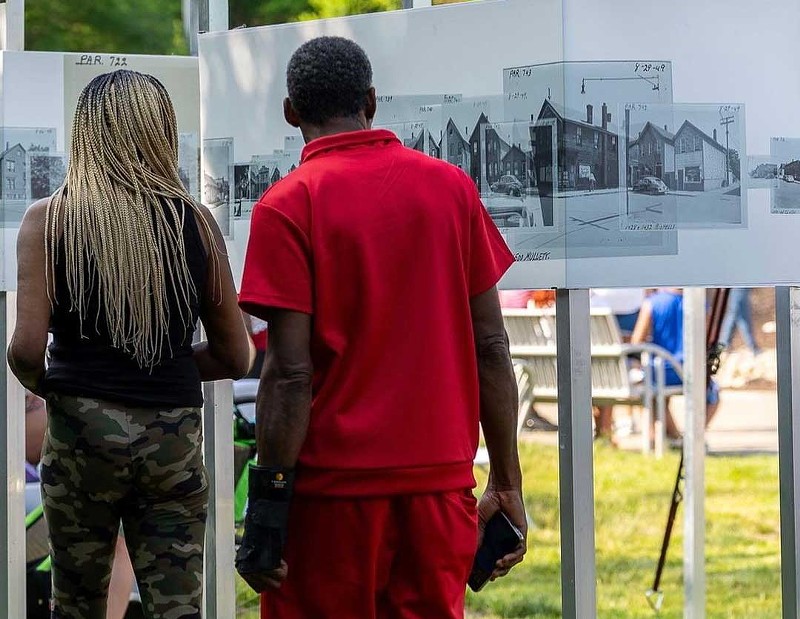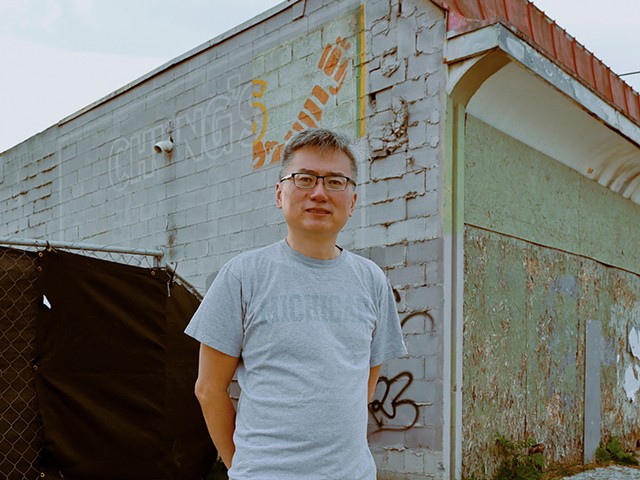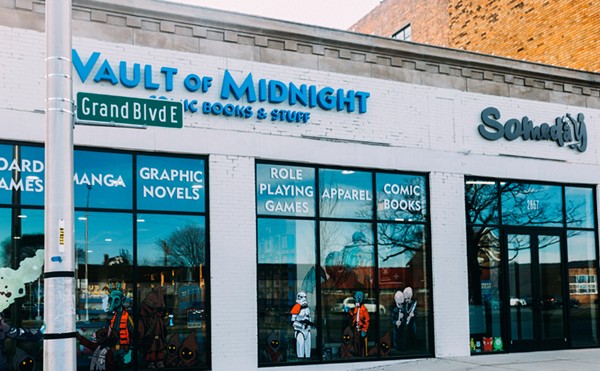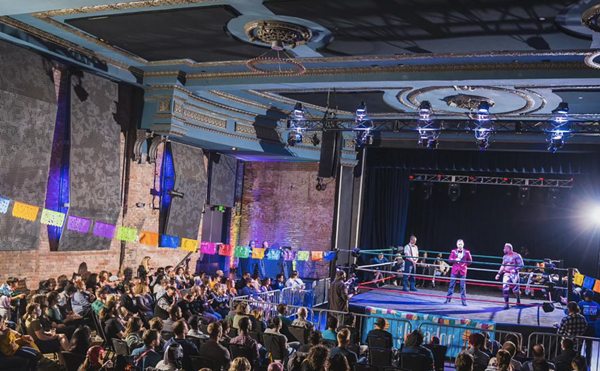
We often talk about Black Bottom and Paradise Valley — Detroit’s bustling Black neighborhoods of the 1920s — as a thing of the past. But for the people over at Black Bottom Archives, that history still lives and breathes through the descendants of Black Detroiters who lived in those once-thriving neighborhoods.
The organization is collecting oral histories from Black Detroiters who have stories of life in Black Bottom and Paradise Valley as part of an ongoing conversation about the I-375 reconstruction project. The downtown Detroit interstate highway effectively dismantled the predominantly Black neighborhoods as residents were forced to move to make way for I-375. Now, as part of a larger trend of reconsidering the racist legacy of such urban highway projects across the U.S., the City of Detroit is planning to dismantle I-375 and replace it with a street-level boulevard, which many Detroiters feel isn’t enough to undo the racial harm it caused.
Black Bottom Archives has an open call for these oral histories, which they will record on video for a future exhibition. The videos will live on the organization’s website for now and they’re offering a $100 stipend to everyone who shares a story.
“The main reason we’re collecting these oral histories is to fill in a gap from the perspective of Black Detroiters and folks who are the descendants,” Black Bottom Archives Executive Director Marcia Black says. “We’re really trying to look at what reparations could look like as part of this 375 project. We’re using oral histories because folks are still alive [and] their descendants are still here.”
The oral histories are part of the organization’s Sankofa Community Research Project, which includes using technology to reconstruct what Paradise Valley and Black Bottom looked like. The group is also working with researchers at Wayne State University and the University of Michigan to collect archival materials and data to complete the picture. Black Bottom Archives is looking to present their findings, along with the oral histories, in the summer or fall of next year at community meetings with an open invitation to city officials.
The group has also been holding “teach-ins” in partnership with the Detroit People’s Platform to hold space for Detroiters to discuss what they would like to see out of the I-375 Reconnecting Communities project.
“We want to hear the voices of people who were directly impacted, but the ripple effects of two communities being destroyed is something that Black Detroiters overall can speak to,” Black says. “It’s also a space for learning about reparations and different preservation skills, and debunking some of the narratives around Black people not resisting being displaced.”
The next teach-in is on November 12.
Earlier this year, the group displayed its Black Bottom Street View exhibit featuring archival photos on the Dequindre Cut. Unfortunately, the exhibit sustained weather damage and had to be removed early.
About the city’s plans for the I-375 Reconnecting Communities project, Black says many Black Detroiters are concerned the area will just become gentrified instead of serving the community it once destroyed. Mayor Mike Duggan has previously said he envisioned it being something akin to the Avenue of Fashion on Livernois, which consists mostly of Black-owned businesses.
“We’re approaching this from the perspective of being grounded in reparations,” Black says. “A part of that is acknowledging, rectifying, and repairing, but also making sure this doesn’t happen again. There are some strategies that could be implemented to make sure this isn’t another project that excludes Black Detroiters from creating stability. The investments don’t matter long-term if we don’t make a pathway to make sure we’re not replicating the past.”
The Black Bottom Archives was first launched in 2015 by PG Watkins and Camille Johnson, two young Black Detroiters who were confronting negative narratives about Detroit while living in Washington, D.C. It started as a Tumblr page to amplify the stories of Black Detroiters and then transformed into a digital publication with a Black business directory, podcast, and book club. They started creating a digital archive of Paradise Valley and Black Bottom in 2018.
They then launched the Sankofa Community Research Project to collect oral histories on Juneteenth of 2023. The oral histories can be recorded virtually or in person. Detroiters who are interested in sharing their stories of Black Bottom and Paradise Valley can fill out a preliminary form online and the organization will contact them for further instructions.
Subscribe to Metro Times newsletters.
Follow us: Google News | NewsBreak | Reddit | Instagram | Facebook | Twitter






